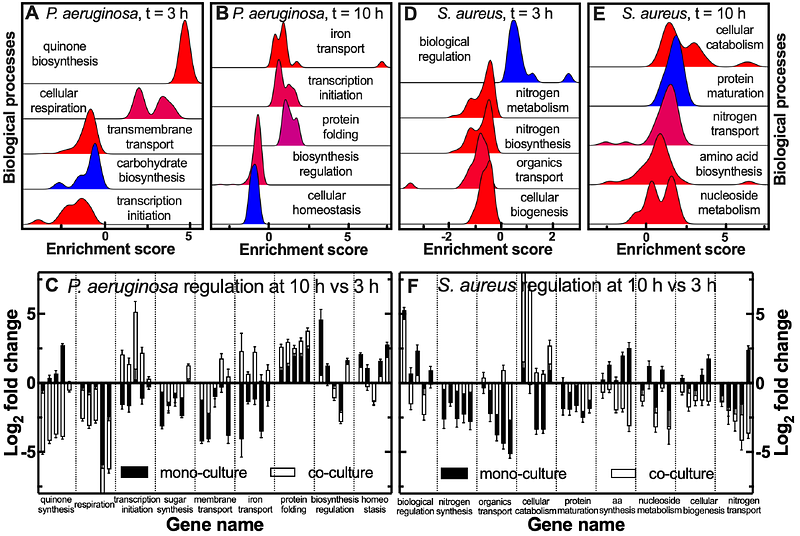Competition with Pseudomonas aeruginosa induces Staphylococcus aureus in an antibiotic-tolerant viable but non culturable state

Competition with Pseudomonas aeruginosa induces Staphylococcus aureus in an antibiotic-tolerant viable but non culturable state
Lapinska, U.; Chandran, G.; Tunstall, t.; Zborowsky, S.; Tolle, G.; Verderosa, A.; Garcia Castillo, M.; ONeill, P. A.; Farbos, A.; Jeffries, A. R.; Young, A. R.; Canton, R.; Caboni, P.; Blaskovich, M.; Warris, A.; Tsaneva-Atanasova, K.; Pagliara, S.
AbstractMicrobial interactions are ubiquitous in nature and shape the environment around us. Interactions between different species of pathogenic microbes often affect clinical outcome by altering either the virulence or antibiotic resistance phenotype of individual microbes. However, there is a gap in our understanding of microbial interactions at the sub-population and single-cell level. Here we investigate the dynamics of the interactions between Staphylococcus aureus and Pseudomonas aeruginosa at the population, single-cell and molecular level using microbiology, microscopy and transcriptomic analyses. We discovered that in co-culture with P. aeruginosa, a sub-population of S. aureus enters in a viable non-culturable state that it is not detected via standard microbiology assays. Consistently, in the presence of P. aeruginosa, S. aureus adopts a survival lifestyle similar to previously described intracellular S. aureus persisters, downregulating nitrogen metabolism and amino acid biosynthesis, while upregulating protein maturation processes. S. aureus also upregulates several efflux pumps in the presence of P. aeruginosa, leading to reduced killing by ciprofloxacin, whereas only a minority of the S. aureus population survive ciprofloxacin treatment while in a viable but non culturable state. In contrast, entrance in a viable but non culturable state is the primary survival strategy of S. aureus in response to vancomycin treatment. These multilayered bacterial interactions may shape the evolution of resistance traits of co-infecting pathogens, therefore, manipulating these interspecies adaptations could provide new opportunities for early therapeutic interventions, particularly in chronic mixed infections.